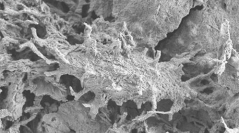

 Comptes Rendus Palevol
7 (2-3) - Pages 159-184
Comptes Rendus Palevol
7 (2-3) - Pages 159-184Advances in technology over the past two decades have resulted in unprecedented access to data from biological specimens. These data have expanded our understanding of physical characteristics, physiological, cellular and subcellular processes, and evolutionary relationships at the molecular level and beyond. Paleontological and archaeological sciences have recently begun to apply these technologies to fossil and subfossil representatives of extinct organisms. Data derived from multidisciplinary, non-traditional techniques can be difficult to decipher, and without a basic understanding of the type of information provided by these methods, their usefulness for fossil studies may be overlooked. This review describes some of these powerful new analytical tools, the data that may be accessible through their use, advantages and limitations, and how they can be applied to fossil material to elucidate characteristics of extinct organisms and their paleoecological environments.
Molecular preservation, Diagenesis, Fossil, Ancient DNA, Ancient protein, Dinosaur, Mass spectrometry